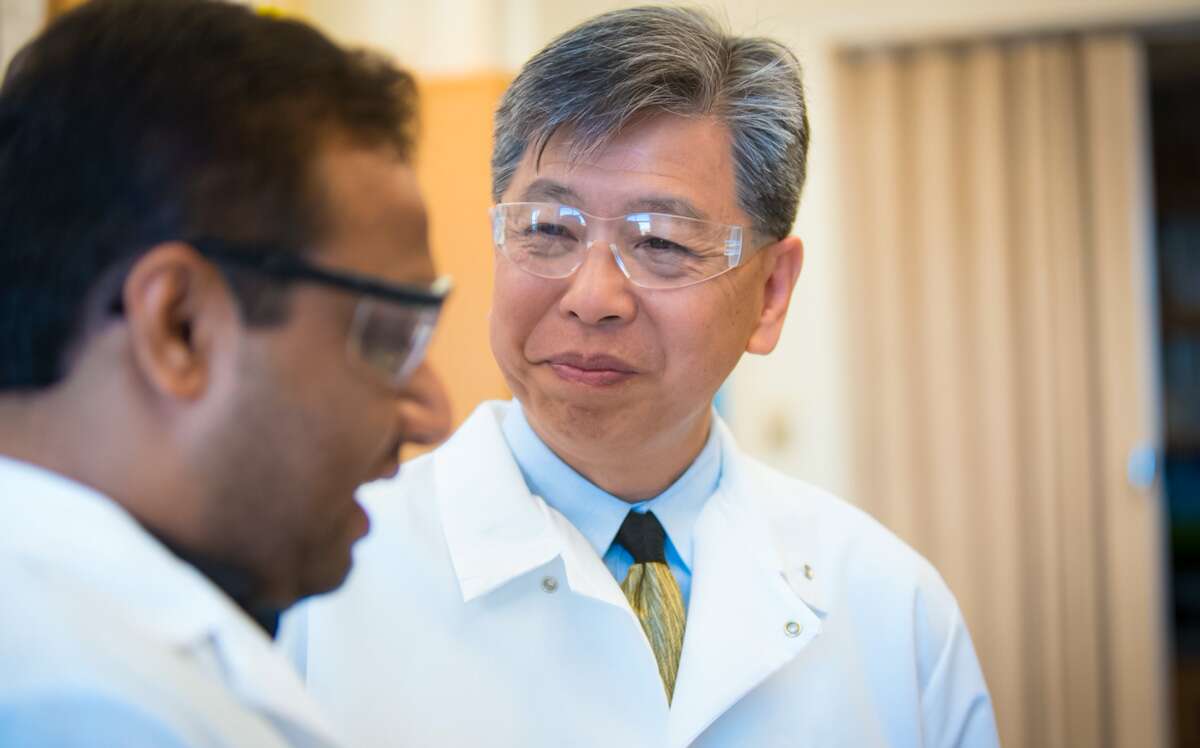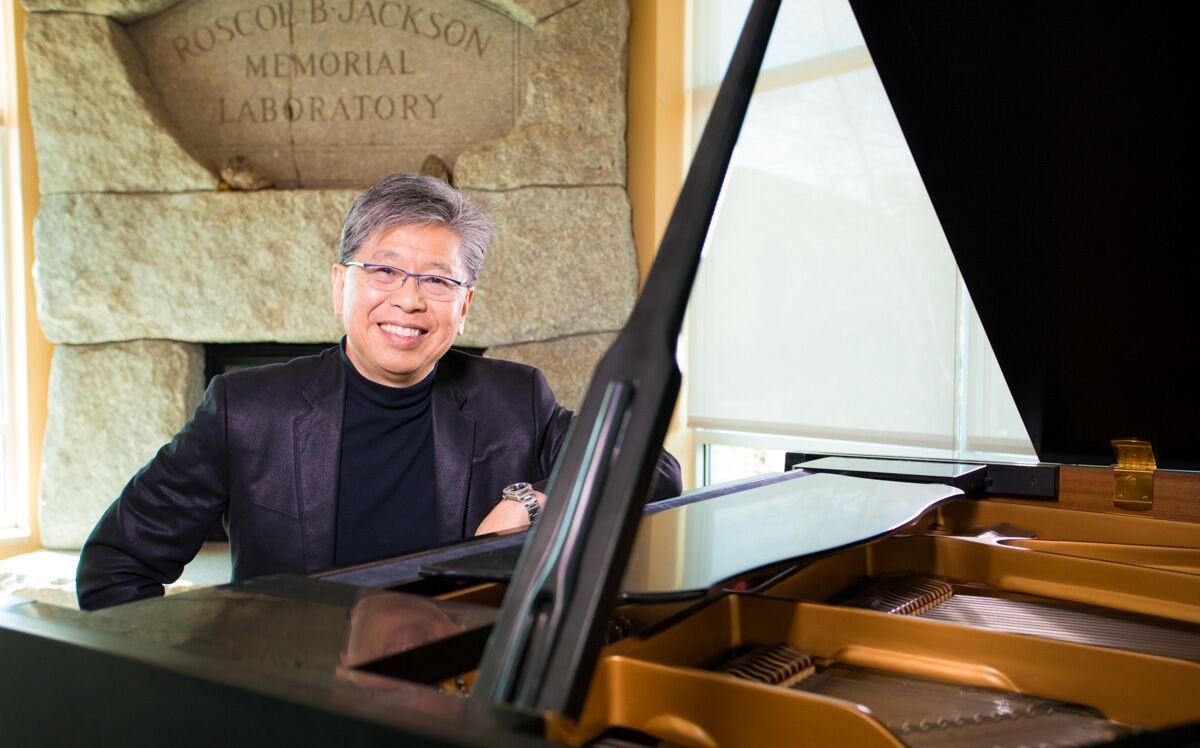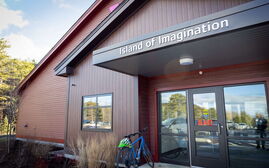
Nonprofit Leader: The Jackson Lab’s Edison Liu leads a Maine response to a global research need
 PHOTo / Courtesy of Jackson Laboratory
Edison Liu led Jackson Laboratory through its pivot to produce COVID-19 mouse strains for global vaccine and treatment research. An accomplished pianist, jazz arrangements have provided a relaxing break during a stressful year.
PHOTo / Courtesy of Jackson Laboratory
Edison Liu led Jackson Laboratory through its pivot to produce COVID-19 mouse strains for global vaccine and treatment research. An accomplished pianist, jazz arrangements have provided a relaxing break during a stressful year.
In nine years with Dr. Edison Liu as president and CEO, the Bar Harbor-based Jackson Laboratory has expanded from 1,300 employees to 2,400 at all its sites and has grown its yearly grant funding from $65 million to $108 million last year. JAX ships 3.4 million mice annually to 20,000 laboratories globally.
In 2020, amid dramatically shifting priorities, JAX initiated a large-scale in-vitro fertilization program to produce a COVID-19 mouse colony large enough to meet global demand from treatment and vaccine developers. Liu mobilized senior management to pivot capabilities as a COVID-19 test site, create a high-throughput process for testing specimens, create testing regimes at other organizations, and donate PPE and specimen collection kits.
Today, the lab has conducted over 1 million tests, produced additional COVID-19 mouse models, and is partnering with Maine CDC to provide genetic sequencing to detect variants.
Mainebiz: What attracted you to JAX?
Edison Liu: Over the course of 11 years, we built the Genome Institute of Singapore into a powerhouse in genomic sciences. But I realized these technologies would only take us so far. We needed robust experimental systems that will allow us to study the complex biology that defines human disease and health.
When JAX called, I knew it was the premier institution in genetics using the mouse system in service of conquering human disease. What JAX didn’t have, at the time, was the robust genomics that we built in Singapore. Coupling the expertise in the premier experimental organism like the mouse with powerful genomic capabilities was a winning intellectual combination for me.
I was also fascinated by JAX as a freestanding research institute with very high aspirations. The degree of freedom allotted to me by the board to pursue my vision of where I viewed genomics and human health had to go was liberating. The convergence of our visions and the financial wherewithal of the institution were a dynamite combination for us to build something new, dramatic and impactful.
MB: In Singapore, you developed world-class credentials battling SARS. What was your role?
EL: I was, in effect, the chief genomic scientist in Singapore deputized to figure out what to do for the epidemic on a scientific level. The role of the Genome Institute was to sequence the virus — at a time when sequencing was not as easy as it is now. Once we sequenced it, the institute turned to developing diagnostics and appropriate treatments.
MB: How did you harness that experience for today’s pandemic?
EL: We called the team together and plotted meticulous contingency plans. Luckily, I still had muscle memory from my previous experience so I could say with some confidence: ‘This is what we’ll have to do.’ For example, we mounted a stay-at-home framework for our workforce. It was an enormous infrastructure lift led by my very capable chief operating officer, Katy Longley.
From the beginning, it was obvious that diagnostics were extraordinarily important. At that time, the country was completely unprepared, so we decided to develop a COVID-19 test ourselves. I knew what hospitals would face going forward and I wanted for JAX to be able to help.
At the same time, we worked assiduously to help the national effort to fight this pandemic. That was to construct a mouse model to help us understand the SARS-CoV-2 infection dynamics. This is the model commonly used at this point. And because we have the tools, we’re beginning to dissect the genetic components that modulate the severity of this disease.
MB: How did you ramp up production of the mouse model?
EL: Our crack teams performed thousands of in-vitro fertilizations. Typically, building a colony takes over a year. We did it in several months with all hands on deck.
MB: And testing?
EL: We already have a regulatory compliant lab for genetic testing, but for cancer. By the way, this genetic testing lab was focused on providing genomic tests for the Maine Cancer Genomics Initiative — a Maine-centric program to provide advanced genomic tests for cancer patients in Maine.
However, for the pandemic, we diverted the work to viral testing. At the beginning, many groups were lulled into believing there was enough testing. I knew that just wasn’t true, and knew we had to jump in to help, so we established the testing protocols quickly.
Then, we populated the labs with volunteers from our scientific staff who worked 24/7 to set up the system. The major problem was not the physical testing, which is indeed challenging, but something we know how to do. More challenging was connecting with the IT systems of the various hospitals that had to transfer their samples to us. The medical information systems across the country are not well integrated.
We would not have been able to respond to this were it not for the unique talents across the laboratory. It’s because of them that we were able to mount this effort.

MB: JAX received $108 million in grants in 2020. Is that the most the lab has ever received in a single year?
EL: Yes. There are institutions that receive more, but they are 100 times bigger than we are. We have only 70 principal investigators. Yale has single departments that are bigger than our entire research leadership. But if you look at our total research productivity, we are among the most accomplished intuitions in the United States and certainly bring in the majority of NIH grants in Maine.
MB: What’s on the horizon?
EL: We are committed to what we call a digital future. We start out with genetics. Put that on steroids and it becomes genomics. Now it’s all about data science, which seeks to make sense of the complex data coming using powerful computational algorithms out of the genetics and genomics we do.
So, our next push will be to engage in artificial intelligence and data science in the interpretation of complex biological data so we can craft predictive biological systems, so that we can project the course of human disease. Also, by knowing how those systems function in the context of disease, we can craft precise treatments for each individual.
MB: Has this been a stressful year for you?
EL: It’s a challenge, but we have great colleagues who work well together. They are my support system and my inspiration. On a personal level, this is my fourth leadership and third major leadership position.
So, none of what we have experienced surprises me. I was trained as a physician and as an oncologist, where every day has its stresses because you’re dealing with a life-threatening disorder. You learn to cope and hopefully maintain your humanity along the way. Living in Maine has a way of soothing the soul. So, when the calming effect of living in Downeast Maine is added to a loving family and fantastic colleagues, I am doing just fine.













0 Comments